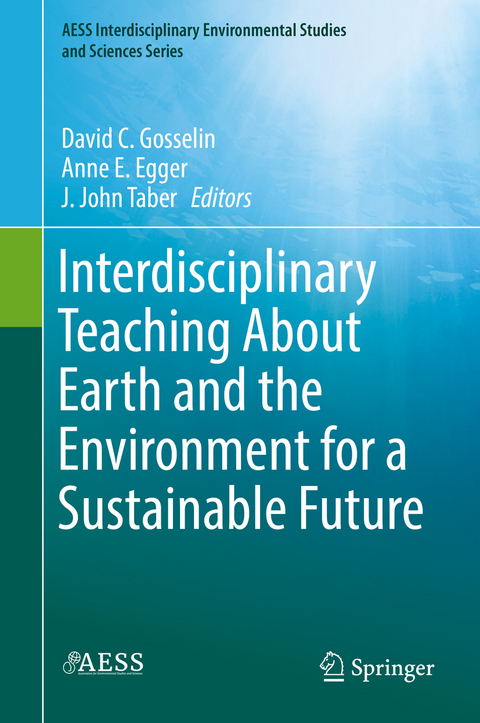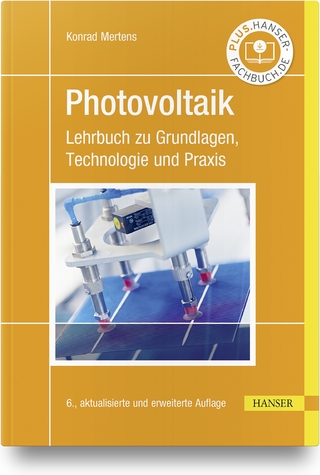
Interdisciplinary Teaching About Earth and the Environment for a Sustainable Future
Springer International Publishing (Verlag)
978-3-030-03272-2 (ISBN)
lt;br />
Part1. Interdisciplinary Teaching about Earth for a Sustainable Future.- Chapter1. Preparing Students to Address Grand Challenges and Wicked Problems: The InTeGrate Approach.- Chapter2. The InTeGrate materials development rubric: A framework and process for developing curricular materials that meet ambitious goals.- Chapter3. Facilitating the development of effective interdisciplinary curricular materials.- Chapter4. Supporting implementation of program-level changes to increase learning about Earth.- Chapter5. Measuring literacy, attitudes, and capacities to solve societal problems.- Part2. Earth and sustainability across the curriculum.- Chapter6. Implementing and assessing InTeGrate Critical Zone Science materials in an undergraduate geoscience program.- Chapter7. Multidisciplinary and Topical in the Science Classroom: Regulating Carbon Emissions to Mitigate Climate Change.- Chapter8. Tackling the Wicked Problem of Global Food Security: Engaging undergraduates through ArcGIS Online.- Chapter9. Using Ecosystem Services to Engage Students in Public Dialogue about Water Resources.- Chapter10. Teaching societal risk and resilience through systems analysis of major storms.- Chapter11. Assessing Hazards, Vulnerability and Risk through an Active Learning-Based Educational Module.- Chapter12. Renewable energy and environmental sustainability.- Part3. Models for change within the higher education system.- Chapter13. Implementing InTeGrate materials in an Upper Division Undergraduate Engineering course.- Chapter14. Modified use of the InTeGrate curriculum in the sustainability general education program at California State University, Chico.- Chapter15. Use of InTeGrate materials to enhance collaboration in the El Paso Higher Education Community.- Chapter16. Creating Opportunities to Teach and Engage with Undergraduates and Faculty at Two-Year Colleges and Minority Serving Institutions.- Chapter17. HBCUs broadening participation in geosciences.
"The book would be useful for others interested in interdisciplinary geoscience course development and assessment. The InTeGrate website can be utilized any instructor interested in using any of the Integrate courses, modules, and assessment materials." (Richard Smardon, Journal of Environmental Studies and Sciences, Vol. 9, 2019)
“The book would be useful for others interested in interdisciplinary geoscience course development and assessment. The InTeGrate website can be utilized any instructor interested in using any of the Integrate courses, modules, and assessment materials.” (Richard Smardon, Journal of Environmental Studies and Sciences, Vol. 9, 2019)
| Erscheinungsdatum | 26.01.2019 |
|---|---|
| Reihe/Serie | AESS Interdisciplinary Environmental Studies and Sciences Series |
| Zusatzinfo | XXIII, 386 p. 72 illus., 63 illus. in color. |
| Verlagsort | Cham |
| Sprache | englisch |
| Maße | 155 x 235 mm |
| Gewicht | 777 g |
| Themenwelt | Naturwissenschaften ► Biologie ► Ökologie / Naturschutz |
| Naturwissenschaften ► Geowissenschaften | |
| Schlagworte | Environmental Education Pedagogy • Environmental Education Research • Geoscience educators • Geoscience researchers • Interdisciplinary environmental science • Sustainability and Geoscience • Sustainability Curriculum |
| ISBN-10 | 3-030-03272-8 / 3030032728 |
| ISBN-13 | 978-3-030-03272-2 / 9783030032722 |
| Zustand | Neuware |
| Haben Sie eine Frage zum Produkt? |
aus dem Bereich


